CJIS Link
LEEP: Providing Information and Communication in the Digital Age
 Information has become the new currency in the digital age. Not only is the FBI’s Law Enforcement Enterprise Portal (LEEP) providing our law enforcement partners a single source for a wealth of information, it is also giving users the means to communicate securely through the use of Virtual Command Centers and Special Interest Groups. In short, LEEP is helping the blue line cut through the red tape to make information available between local, state, tribal, and federal agencies more quickly and safely online.
Information has become the new currency in the digital age. Not only is the FBI’s Law Enforcement Enterprise Portal (LEEP) providing our law enforcement partners a single source for a wealth of information, it is also giving users the means to communicate securely through the use of Virtual Command Centers and Special Interest Groups. In short, LEEP is helping the blue line cut through the red tape to make information available between local, state, tribal, and federal agencies more quickly and safely online.
Purpose Code X (Name-Based Checks) Granted to Tribes
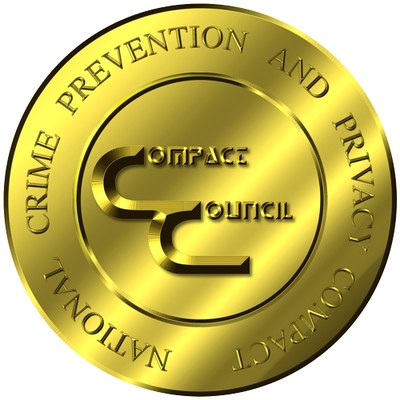 In late 2014, the FBI’s Criminal Justice Information Services Division and the Office of the General Counsel’s Criminal Justice Information Law Unit participated in discussions with tribes, state identification bureaus, state social service agencies, the Bureau of Indian Affairs, and several offices within the U.S. Department of Justice regarding the emergency placement of tribal children. These discussions uncovered the need for federally recognized tribes to have access to the Interstate Identification Index (III) when there is an urgent need to place an at-risk child but the situation does not lend itself to the immediate fingerprinting of potential temporary guardians. This is where Purpose Code X comes into the picture.
In late 2014, the FBI’s Criminal Justice Information Services Division and the Office of the General Counsel’s Criminal Justice Information Law Unit participated in discussions with tribes, state identification bureaus, state social service agencies, the Bureau of Indian Affairs, and several offices within the U.S. Department of Justice regarding the emergency placement of tribal children. These discussions uncovered the need for federally recognized tribes to have access to the Interstate Identification Index (III) when there is an urgent need to place an at-risk child but the situation does not lend itself to the immediate fingerprinting of potential temporary guardians. This is where Purpose Code X comes into the picture.
N-DEx: Evolving with User Needs
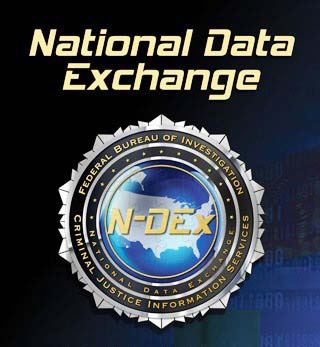
Need to Know: Revised Gun File Video Now Available
 Due to an error in the previous version of the National Crime Information Center Gun File Video, the CJIS Division released an updated version that became available on June 1, 2015. Law enforcement agencies that want the revised video may contact the CJIS Logistical Support Unit by telephone at (304) 625-4438 or via e-mail at cksupply@leo.gov to request a copy.
Due to an error in the previous version of the National Crime Information Center Gun File Video, the CJIS Division released an updated version that became available on June 1, 2015. Law enforcement agencies that want the revised video may contact the CJIS Logistical Support Unit by telephone at (304) 625-4438 or via e-mail at cksupply@leo.gov to request a copy.
FBI Directors Rely on UCR Data
 At the 1936 International Association of Chiefs of Police convention, then FBI Director J. Edgar Hoover remarked, “On average of once a week, somewhere in the United States, a law enforcement officer is killed at the hands of the underworld. It is unfortunate that we do not possess accurate statistics upon this subject....” Fast forward to February 2015, when current FBI Director James B. Comey asked, “How can we address concerns about ‘use of force,’ how can we address concerns about officer-involved shootings if we do not have a reliable grasp on the demographics and circumstances of those incidents?” He added, “We simply must improve the way we collect and analyze data to see the true nature of what’s happening in all of our communities.” See how the FBI’s Uniform Crime Reporting (UCR) Program responded to Director Hoover’s remarks and what it is doing to address the current data gap noted by Director Comey.
At the 1936 International Association of Chiefs of Police convention, then FBI Director J. Edgar Hoover remarked, “On average of once a week, somewhere in the United States, a law enforcement officer is killed at the hands of the underworld. It is unfortunate that we do not possess accurate statistics upon this subject....” Fast forward to February 2015, when current FBI Director James B. Comey asked, “How can we address concerns about ‘use of force,’ how can we address concerns about officer-involved shootings if we do not have a reliable grasp on the demographics and circumstances of those incidents?” He added, “We simply must improve the way we collect and analyze data to see the true nature of what’s happening in all of our communities.” See how the FBI’s Uniform Crime Reporting (UCR) Program responded to Director Hoover’s remarks and what it is doing to address the current data gap noted by Director Comey.
New Initiative Aims to Increase Crime Reporting in NIBRS
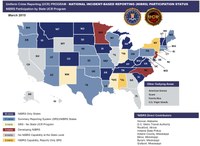 While most law enforcement agencies continue to submit their crime data to the Uniform Crime Reporting (UCR) Program via the Summary Reporting System (SRS), the FBI and the Bureau of Justice Statistics (BJS) aim to change that through the National Crime Statistics Exchange (NCS-X). The goal of the NCS-X, which was initiated in June 2013, is to accelerate the pace that agencies join in to report their statistics through the National Incident-Based Reporting System (NIBRS).
While most law enforcement agencies continue to submit their crime data to the Uniform Crime Reporting (UCR) Program via the Summary Reporting System (SRS), the FBI and the Bureau of Justice Statistics (BJS) aim to change that through the National Crime Statistics Exchange (NCS-X). The goal of the NCS-X, which was initiated in June 2013, is to accelerate the pace that agencies join in to report their statistics through the National Incident-Based Reporting System (NIBRS).
Dispositions Aid in Preventing Unauthorized Access to Biological Agents and Toxins
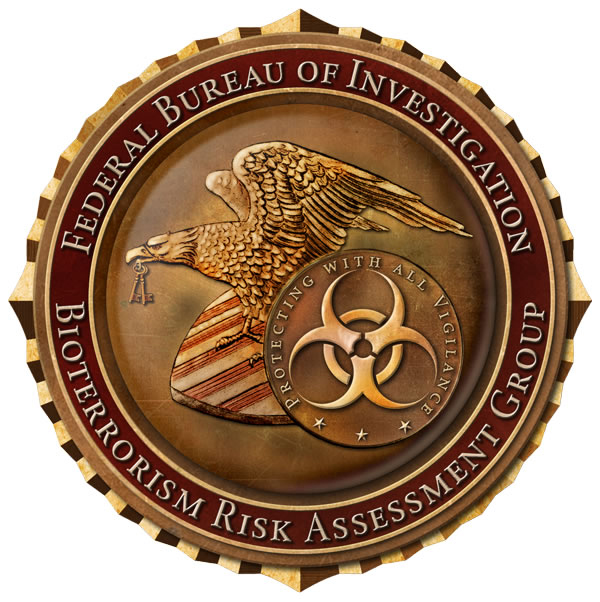 From research and manufacturing to transfer and usage, thousands of individuals across the United States handle biological agents and toxins every day. In fact, food and medical industries depend on these individuals’ responsible management of such materials. To help ensure that Biological Select Agents and Toxins are not accessible to those who may represent a threat to the United States’ interests, the FBI’s Bioterrorism Risk Assessment Group (BRAG) screens individuals applying for positions that deal with them. In making eligibility determinations, the Personnel Security Specialists in the BRAG rely on the criminal history records maintained at the FBI’s Criminal Justice Information Services Division—and, ultimately, the law enforcement and criminal justice agencies that submit them—for the most complete and accurate information.
From research and manufacturing to transfer and usage, thousands of individuals across the United States handle biological agents and toxins every day. In fact, food and medical industries depend on these individuals’ responsible management of such materials. To help ensure that Biological Select Agents and Toxins are not accessible to those who may represent a threat to the United States’ interests, the FBI’s Bioterrorism Risk Assessment Group (BRAG) screens individuals applying for positions that deal with them. In making eligibility determinations, the Personnel Security Specialists in the BRAG rely on the criminal history records maintained at the FBI’s Criminal Justice Information Services Division—and, ultimately, the law enforcement and criminal justice agencies that submit them—for the most complete and accurate information.
Busted…with the Help of NICS
A National Instant Criminal Background Check inquiry regarding a long gun purchase revealed that the would-be buyer had an active warrant for aggravated assault with a weapon. The subject was subsequently apprehended after the NICS examiner provided law enforcement with the person’s address.
N-DEx: Powering Investigation Beyond Your Jurisdiction
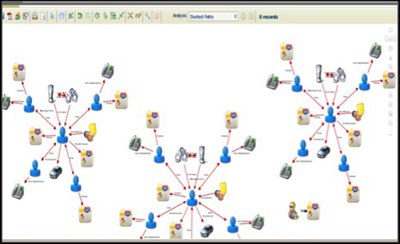 It’s all too familiar—too many cases and not enough time to follow up. If only there were a way to run all of the entities (i.e., persons, places, things, and events) associated with those cases through a national information sharing system. Now, thanks to the power of the FBI’s National Data Exchange Program (N-DEx), law enforcement and criminal justice agencies have a resource at their fingertips to do that and more. N-DEx provides the ability to share, search, link, and analyze information by removing jurisdictional and geographical limitations. This integration of roughly 243 million records from more than 5,000 criminal justice agencies offers a secure platform through which law enforcement can access case reports, records, and information on nearly 1.7 billion entities in a real-time manner.
It’s all too familiar—too many cases and not enough time to follow up. If only there were a way to run all of the entities (i.e., persons, places, things, and events) associated with those cases through a national information sharing system. Now, thanks to the power of the FBI’s National Data Exchange Program (N-DEx), law enforcement and criminal justice agencies have a resource at their fingertips to do that and more. N-DEx provides the ability to share, search, link, and analyze information by removing jurisdictional and geographical limitations. This integration of roughly 243 million records from more than 5,000 criminal justice agencies offers a secure platform through which law enforcement can access case reports, records, and information on nearly 1.7 billion entities in a real-time manner.
2014 N-DEx Success Story of the Year: Thousands of Cartons of Counterfeit Cigarettes Discovered
 On June 8, 2012, two troopers with the Maryland State Police (MSP) stopped a tractor-trailer hauling three rented storage units for a traffic violation. The information that the truck driver provided during the stop confirmed that he and the tractor-trailer were legitimate. However, the information on the bill of lading raised questions concerning one of the storage units that the tractor-trailer was delivering. When the troopers used information from the bill of lading to search the Law Enforcement Information Exchange, i.e., LlnX, and the National Data Exchange (N-DEx), they discovered that the renter of one of the units was the subject of a major ATF investigation. Learn how the MSP and the ATF used N-DEx’s data to connect a seemingly routine situation to the larger case and what happened when the troopers allowed the truck to continue to its scheduled delivery in New York.
On June 8, 2012, two troopers with the Maryland State Police (MSP) stopped a tractor-trailer hauling three rented storage units for a traffic violation. The information that the truck driver provided during the stop confirmed that he and the tractor-trailer were legitimate. However, the information on the bill of lading raised questions concerning one of the storage units that the tractor-trailer was delivering. When the troopers used information from the bill of lading to search the Law Enforcement Information Exchange, i.e., LlnX, and the National Data Exchange (N-DEx), they discovered that the renter of one of the units was the subject of a major ATF investigation. Learn how the MSP and the ATF used N-DEx’s data to connect a seemingly routine situation to the larger case and what happened when the troopers allowed the truck to continue to its scheduled delivery in New York.
UCR Program Quarterly, CJIS Information Letters Available on the LEEP
The national Uniform Crime Reporting (UCR) Program replaced the UCR State Program Bulletin and UCR Newsletter with the UCR Program Quarterly to provide state UCR Program managers and direct contributors with the latest information about the program. Current and past editions of the UCR Program Quarterly are available on the FBI’s website and via the UCR Program’s Special Interest Group on the Law Enforcement Online (LEO) SIG Service of the Law Enforcement Enterprise Portal (LEEP).
CJIS Information Letters provide the users of CJIS systems and services with policy and procedural updates. The newsletters are available on the CJIS SIG on the LEO SIG Service of the LEEP.
Stay Linked: Sign Up for Your Alert Today!
Available exclusively online, the CJIS Link provides information about system enhancements, training opportunities, policy changes, and successes to CJIS system users across the law enforcement, national security, and intelligence communities. Sign up for e-mail alerts that let you know when new editions become available.
FBI Offers Active Shooter Resource Page on LEEP
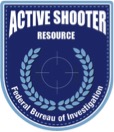 Law enforcement agencies seeking resources to prepare their officers to handle an active shooter incident can access the FBI’s Active Shooter Resource Page on the Law Enforcement Enterprise Portal (LEEP) to find studies, videos, guidebooks, and other information on the subject. The page serves as a clearinghouse for relevant information from the FBI, as well as from law enforcement agencies and academics across the nation. The resources available on LEEP cover multiple angles of the issue, including training opportunities, crisis management, victim assistance, and media relations.
Law enforcement agencies seeking resources to prepare their officers to handle an active shooter incident can access the FBI’s Active Shooter Resource Page on the Law Enforcement Enterprise Portal (LEEP) to find studies, videos, guidebooks, and other information on the subject. The page serves as a clearinghouse for relevant information from the FBI, as well as from law enforcement agencies and academics across the nation. The resources available on LEEP cover multiple angles of the issue, including training opportunities, crisis management, victim assistance, and media relations.
Photo Finish: Active Shooter Resources
Get information from videos, special studies, and other resources about how to respond to active shooter incidents. Resources are available for law enforcement as well as the general public.
NGI Officially Replaces IAFIS—Yields More Search Options and Investigative Leads, and Increased Identification Accuracy
The Integrated Automated Fingerprint Identification System (IAFIS) served law enforcement well by processing volumes of fingerprint submissions that far exceeded its design. However, growing demands for biometric services, advances in technology, and expanding customer requirements drove the FBI to build its largest information technology system ever, the Next Generation Identification (NGI). From its inception, the NGI was slated for implementation in seven increments over seven years at an estimated cost of $1.2 billion. With five increments deployed, the rollout of another increment on September 7, 2014, marked the official deployment of the NGI and the decommissioning of the IAFIS. To date, NGI Program initiatives are on scope, on schedule, and slightly below cost.
System Records Set at CJIS in 2014
As CJIS systems evolve to meet law enforcement’s ever-growing demands, they just keep getting better and better. See how the National Crime Information Center, the National Instant Criminal Background Check System, the National Data Exchange, and the Integrated Automated Fingerprint Identification System broke records for exceptional service in 2014.
The FBI’s Law Enforcement Officers Killed and Assaulted Program Strives to Save Lives
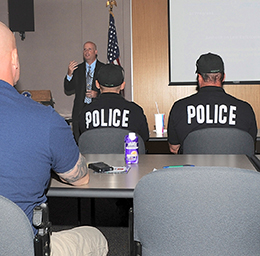 The FBI’s Law Enforcement Officers Killed and Assaulted (LEOKA) Program uses crime statistics gathered as part of the Uniform Crime Reporting Program, along with additional information collected by LEOKA personnel, in their mission to reduce the number of law enforcement officer deaths and assaults. In addition to the annual publication Law Enforcement Officers Killed and Assaulted, the LEOKA Program also provides free Officer Safety Awareness Training to local, state, tribal, federal, and international law enforcement agencies.
The FBI’s Law Enforcement Officers Killed and Assaulted (LEOKA) Program uses crime statistics gathered as part of the Uniform Crime Reporting Program, along with additional information collected by LEOKA personnel, in their mission to reduce the number of law enforcement officer deaths and assaults. In addition to the annual publication Law Enforcement Officers Killed and Assaulted, the LEOKA Program also provides free Officer Safety Awareness Training to local, state, tribal, federal, and international law enforcement agencies.
2014 Latent Hit of the Year: 1983 Massachusetts Cold Case Murder
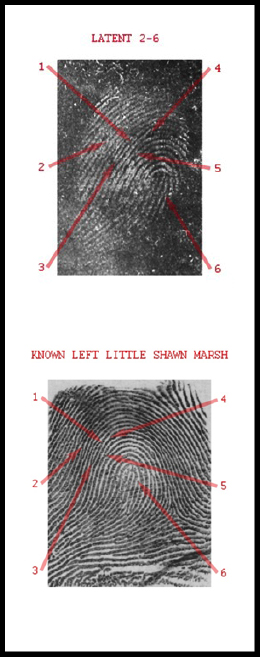 In the summer of 1983, an intruder murdered a construction worker in his Massachusetts hotel room and brutally attacked his co-worker. Although more than 23 latent fingerprints were recovered from the scene, several were deemed of no value, and others were identified as those of the deceased victim and employees of the hotel. When searches of the remaining latent fingerprints against the state’s Automated Fingerprint Identification System produced no results, the case went cold. Read the details about how this case was finally solved when latent prints were identified through a search of the FBI’s Integrated Automated Fingerprint Identification System.
In the summer of 1983, an intruder murdered a construction worker in his Massachusetts hotel room and brutally attacked his co-worker. Although more than 23 latent fingerprints were recovered from the scene, several were deemed of no value, and others were identified as those of the deceased victim and employees of the hotel. When searches of the remaining latent fingerprints against the state’s Automated Fingerprint Identification System produced no results, the case went cold. Read the details about how this case was finally solved when latent prints were identified through a search of the FBI’s Integrated Automated Fingerprint Identification System.
2015 Latent Hit of the Year: Submit Your Success!
 Law enforcement officials with latent identification success stories that they would like to be considered for the 2015 Latent “Hit of the Year” should e-mail the case details to fbilatenthit@leo.gov. The deadline for submission for next year’s award is January 10, 2015.
Law enforcement officials with latent identification success stories that they would like to be considered for the 2015 Latent “Hit of the Year” should e-mail the case details to fbilatenthit@leo.gov. The deadline for submission for next year’s award is January 10, 2015.
Busted…with the Help of NICS and IAFIS
An attempted gun purchase was denied in Texas due to the probation violator’s results from the National Instant Criminal Background Check System, and two individuals in custody in Mexico were confirmed to be Bureau fugitives thanks to the FBI Los Angeles Field Office’s inquiry through the Integrated Automated Fingerprint Identification System.
09.09.10
| Get the Latest News in the CJIS Link |

The FBI’s Criminal Justice Information Services (CJIS) Division operates programs and services for the law enforcement, national security, and intelligence communities 24/7. The CJIS Link provides information about:
- How CJIS systems can help agencies solve crimes.
- New initiatives and technologies.
- Upgrades and changes regarding CJIS systems.
- The work of the CJIS Advisory Policy Board.
| Topic Index |
- Biometrics and Next Generation Identification (NGI)
- Collaborations
- Law Enforcement Enterprise Portal (LEEP)
- Law Enforcement Resources
- National Crime Information Center (NCIC)
- National Data Exchange (N-DEx)
- National Instant Criminal Background Check System (NICS)
- Uniform Crime Reporting (UCR)
- All Articles
Stay Linked! 
|
- Subscribe
Check the CJIS Link box under the Publications category
- Contact Us
Provide feedback, a success story, or an article idea

